Paul Read's Blog: Speaking Of Spain, page 4
June 1, 2014
The Death of an Idea: Final Part in the Silenced Revolution Series.
People say you can’t kill an idea, but you can. For that's what happened in Spain in 1937. The Promise of a New World In the last two episodes (Read Part 1 & Part 2) we saw how the anarchist movement in Spain had propelled parts of the country into a future where everyone owned the land they lived on, the factories they worked in and the canteens they ate in. It was the people themselves that ran the public transport system, that ran their hospitals and built their schools. It was an idealistic world that gave everyone a voice, a part to play and a future without corruption, injustice or repression from the state, the church or the army. This was the long-awaited anarchist revolution.
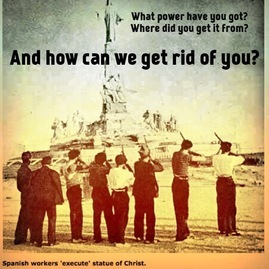 No other political or social ideology would come close to the anarchist movement of 1936 in Spain, yet by 1937 the movement had not only been dealt a death blow, but its very existence had begun to be eradicated from the minds and memory of popular history in a chilling pre-run of Orwells 1984.
No other political or social ideology would come close to the anarchist movement of 1936 in Spain, yet by 1937 the movement had not only been dealt a death blow, but its very existence had begun to be eradicated from the minds and memory of popular history in a chilling pre-run of Orwells 1984.
How could this happen? And why - 80 years later - are we seeing the shoots of the movement once more arise between the down-trodden soles of the disenchanted and unemployed in Spain? Read More here.....
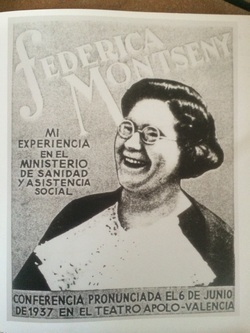 In Part 1 we saw how the anarchist groupings - particularly the CNT and the FAI helped mobilise the people of Catalunya and parts of Andalusia to take control of their own destinies. In Part 2 we saw how one man in particular, came to represent this new future: Buenaventura Durruti and how he had been persuaded to take the Durruti Column to Madrid to help defend the city from attack by Franco’s forces.
In Part 1 we saw how the anarchist groupings - particularly the CNT and the FAI helped mobilise the people of Catalunya and parts of Andalusia to take control of their own destinies. In Part 2 we saw how one man in particular, came to represent this new future: Buenaventura Durruti and how he had been persuaded to take the Durruti Column to Madrid to help defend the city from attack by Franco’s forces.
Madrid Nov. 1936
Madrid looks as though its about to fall to Franco. The Republican Government tells the Madrileños to "man the trenches" yet without telling a soul, moves itself safely to Valencia. The military committee in the capital is left to “do its best” against the professional army at its borders.
Meanwhile, the anarchists who have been hesitant about helping out a government that has done little to support their needs in Catlaunya had just invited four anarchists to become cabinet ministers - including the novelist Federica Montseny - who becomes the first woman cabinet minister in the history of Spain (In Britain it would not be until 1953 that a woman would take up a cabinet position.)
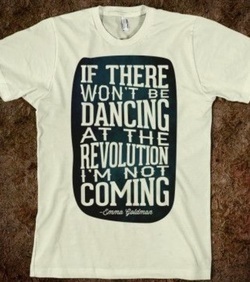 Anarchists in government
Anarchists in government
The Anarchists in government were torn between their commitment to do away with any government and their need to help win the war. The cabinet new members persuade Durruti to come to the defense of Madrid. But the Communists are concerned that the invincible Durruti Column will prove to be the public saviour of the capital - a role they are preserving for themselves. So they persuade the Military Committee in Madrid to direct Durruti’s troops in an attack on the most vulnerable and important of fronts. They know that even this anarchist militia will have little chance of success against the well-armed and professional ranks amassed there.
When Durruti discovers this scheme, he is incensed but - as charismatic leaders tend it be - he rises to the challenge and sends his troops into the battle. But these are no ordinary disciplined ranks of soldiers - they are anarchists - and have to right to leave a battle scene if they think fit. Very quickly the anarchist troops begin to realise that they had been led into slaughter and are being used as pawns in a larger political game.
The Death of Durruti
When Durruti receives notice that his troops are deserting the battle-front - he rushes to the scene to stop them.
“Compañeros - Return” he shouts. “Cowards. In the name of FAI return and fight.”
“Why die in defence of Madrid,” they ask him. “If we are going to die it should be in defence of Catalunya. Not fed to Franco’s troops under these conditions.”
As the debate continues a shot is suddenly heard and Durruti falls to the ground. By the following morning he is dead.
Who Killed Durruti?
Durruti - the idealist - the man who had fought so hard to liberate the human spirit is no longer. Who killed the man who had charged into battle a 1000 times and never been struck by the enemy? Who was behind the shooting of Durruti? Was it an enemy sniper? Was it the communists? Or was it one of his own men that felt Durruti had finally betrayed them?
Later evidence from gunpowder samples on his clothes indicated that Durruti had been shot from a distance of just 50cm. Rumours begin to fly back and forth.
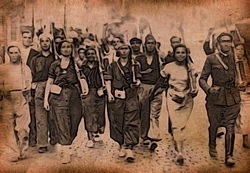 However Durruti died, the balance of power was now shifting fast. It was only the popularity and influence of Durruti that had balanced the communists increasing influence in government. Now, with Durruti out of the way, Moscow had total freedom to crush the anarchist revolution in Catalonia as they had done in Russia and in the Ukraine. Now the Communists were free to fight the war according to Stalin’s agenda.
However Durruti died, the balance of power was now shifting fast. It was only the popularity and influence of Durruti that had balanced the communists increasing influence in government. Now, with Durruti out of the way, Moscow had total freedom to crush the anarchist revolution in Catalonia as they had done in Russia and in the Ukraine. Now the Communists were free to fight the war according to Stalin’s agenda.
Many of Durruti’s column - disillusioned and in disbelief at the loss of their leader - return to Catalonia, though many stay and help fight for the defence of the city. But when 2 anarchists are found mysteriously assassinated in the streets of Madrid a few days later, they realise that they too must leave for the reprisals from Stalin's forces had begun.
The Astonishing Funeral
Durruti's body is taken back to Barcelona, where the funeral brings out the whole population of the city. 100’s of 1000’s are spilling out of every doorway, scrambling up statues to see the coffin pass by. Never before - not for royalty nor leaders of the state - had Barcelona seen this number of people come out to pay their respects. As the procession finally heads off - up goes those defiant fists once more, like a sea of resistance.
Watch the incredible footage of the Durruti Funeral Procession Up goes the procession along the Ramblas with the band playing the funeral march. Along past the USA embassy with its flag at half mast (did the Americans realise this man had robbed banks, assassinated archbishops and plotted to kill King Alfonso X III ?) It is an emotive moment for the libertarian movement and the people of Barcelona. A moment that history books may forget, but not the anarchists of Catalunya.
The Final Countdown
By May 1937, the conflict comes to a head in Barcelona as the Communists stage an assault against the CNT and the Trotskiest organisation the POUM.(Orwell’s militia group) Many are killed in the street battles, others are imprisoned or disappear and many others - like Orwell - are hounded by Soviet agents and are forced to flee undercover back to their respective countries.
The greatest social experiment the world has ever witnessed is now over. The Catalan politicians are back in government an the collectives are being dismantled, their leaders locked up or shot and the memory of the anarchist revolution is being systematically erased from history books. Even the industrial plants - modernised under the anarchist collectives - are pulled down by 1939. Even outside Spain, as Orwell discovers when trying to find a publisher for Homage to Catalunya, the world does not want to know the story of the libertarian left. The Spanish Civil War is seen as a simple struggle between democracy and fascism - a story in which the Communists came to the defence of a fledging republic and a defenceless people. History was being re-written.
Although the body of Durruti was buried at the cemetery in monjuic, it is rumoured that it was later moved. The body of Durruti, like the legacy of the anarchist movement in Spain, is hard to track down.
The legacy of the Durruti and the Anarchists
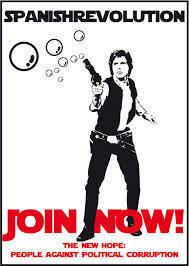 The collusion of the republican government and the pressure from the Communist Party at the end of the civil war wiped effectively wiped out the anarchist history and their revolutionary advances. Franco had little to do when he finally entered Madrid and Barcelona other clear-up what little was left of the social revolutionary movements.
The collusion of the republican government and the pressure from the Communist Party at the end of the civil war wiped effectively wiped out the anarchist history and their revolutionary advances. Franco had little to do when he finally entered Madrid and Barcelona other clear-up what little was left of the social revolutionary movements.
But he installed a regime that would create a populace fearful of such experiments again. The following generations carried in their genetic memory the consequences of such bravery and the betrayals of their ideals.
Until recently, that is.
Since 2011 things have begun to stir once more. In Spain we have seen new methods of struggle evolving - the movement in defence of the homeless (desahucios) , the intimidation of corrupt politicians (eschaches), the defence of public companies (mareas), neighbourhood voting and assemblies, the indignadas movment, occupation of public spaces, #FicticiousProtest/#GhostProtest) #spanishrevolution etc etc
History Repeats itself Collectives in Spain 1936
Collectives in Spain 1936
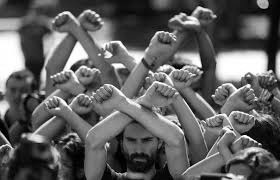 Collectives in Spain 2011 Even this week (late May 2014) we have seen EU election results with a surge of popularity for the radical left in Spain. We have seen concessions won by those organising street riots in defence of occupied housing in Barcelona, and we have seen - despite the criminalisation of such moves - the continuation of the escrache movement.
Collectives in Spain 2011 Even this week (late May 2014) we have seen EU election results with a surge of popularity for the radical left in Spain. We have seen concessions won by those organising street riots in defence of occupied housing in Barcelona, and we have seen - despite the criminalisation of such moves - the continuation of the escrache movement.
The anarchist ideals of accountability, transparency and self-government - traditionally dismissed as utopian - are not quite dead yet. As Chomsky says, whenever you have an upsurge in political activity...you will find the strands of anarchism once more on the move.
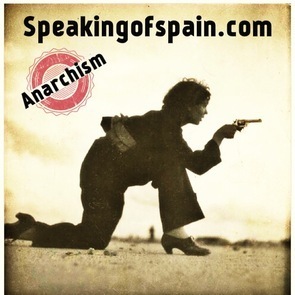 Women Anarchists Training in Barcelona *Want to know more about the history of Spain? Next mOnth a new release:
Women Anarchists Training in Barcelona *Want to know more about the history of Spain? Next mOnth a new release:
Anarchy and the Tapa: How To Kill A Social Revolution in Spain
History comes alive in this compelling story of... Anarchy in Spain The Back Hand and the Bread and Cheese Revolts The inside story of Durruti the International Activist on the run and his suspicious death. The role of George Orwell and other writers An in-depth view of the collective protest movements operating today. A new publication with classic Images, links to videos, music, speeches AND for the first few that sign up - a cut out and pin up CNT flag to unfurl on your balcony (Guaranteed 100% to unsettle your neighbours.)
Sign up below and receive the news as it happens about this and other special books.
#mc_embed_signup{background:#fff; clear:left; font:14px Helvetica,Arial,sans-serif; } /* Add your own MailChimp form style overrides in your site stylesheet or in this style block. We recommend moving this block and the preceding CSS link to the HEAD of your HTML file. */ Subscribe to the mOnks Mailing List
 No other political or social ideology would come close to the anarchist movement of 1936 in Spain, yet by 1937 the movement had not only been dealt a death blow, but its very existence had begun to be eradicated from the minds and memory of popular history in a chilling pre-run of Orwells 1984.
No other political or social ideology would come close to the anarchist movement of 1936 in Spain, yet by 1937 the movement had not only been dealt a death blow, but its very existence had begun to be eradicated from the minds and memory of popular history in a chilling pre-run of Orwells 1984.How could this happen? And why - 80 years later - are we seeing the shoots of the movement once more arise between the down-trodden soles of the disenchanted and unemployed in Spain? Read More here.....
 In Part 1 we saw how the anarchist groupings - particularly the CNT and the FAI helped mobilise the people of Catalunya and parts of Andalusia to take control of their own destinies. In Part 2 we saw how one man in particular, came to represent this new future: Buenaventura Durruti and how he had been persuaded to take the Durruti Column to Madrid to help defend the city from attack by Franco’s forces.
In Part 1 we saw how the anarchist groupings - particularly the CNT and the FAI helped mobilise the people of Catalunya and parts of Andalusia to take control of their own destinies. In Part 2 we saw how one man in particular, came to represent this new future: Buenaventura Durruti and how he had been persuaded to take the Durruti Column to Madrid to help defend the city from attack by Franco’s forces. Madrid Nov. 1936
Madrid looks as though its about to fall to Franco. The Republican Government tells the Madrileños to "man the trenches" yet without telling a soul, moves itself safely to Valencia. The military committee in the capital is left to “do its best” against the professional army at its borders.
Meanwhile, the anarchists who have been hesitant about helping out a government that has done little to support their needs in Catlaunya had just invited four anarchists to become cabinet ministers - including the novelist Federica Montseny - who becomes the first woman cabinet minister in the history of Spain (In Britain it would not be until 1953 that a woman would take up a cabinet position.)
 Anarchists in government
Anarchists in governmentThe Anarchists in government were torn between their commitment to do away with any government and their need to help win the war. The cabinet new members persuade Durruti to come to the defense of Madrid. But the Communists are concerned that the invincible Durruti Column will prove to be the public saviour of the capital - a role they are preserving for themselves. So they persuade the Military Committee in Madrid to direct Durruti’s troops in an attack on the most vulnerable and important of fronts. They know that even this anarchist militia will have little chance of success against the well-armed and professional ranks amassed there.
When Durruti discovers this scheme, he is incensed but - as charismatic leaders tend it be - he rises to the challenge and sends his troops into the battle. But these are no ordinary disciplined ranks of soldiers - they are anarchists - and have to right to leave a battle scene if they think fit. Very quickly the anarchist troops begin to realise that they had been led into slaughter and are being used as pawns in a larger political game.
The Death of Durruti
When Durruti receives notice that his troops are deserting the battle-front - he rushes to the scene to stop them.
“Compañeros - Return” he shouts. “Cowards. In the name of FAI return and fight.”
“Why die in defence of Madrid,” they ask him. “If we are going to die it should be in defence of Catalunya. Not fed to Franco’s troops under these conditions.”
As the debate continues a shot is suddenly heard and Durruti falls to the ground. By the following morning he is dead.
Who Killed Durruti?
Durruti - the idealist - the man who had fought so hard to liberate the human spirit is no longer. Who killed the man who had charged into battle a 1000 times and never been struck by the enemy? Who was behind the shooting of Durruti? Was it an enemy sniper? Was it the communists? Or was it one of his own men that felt Durruti had finally betrayed them?
Later evidence from gunpowder samples on his clothes indicated that Durruti had been shot from a distance of just 50cm. Rumours begin to fly back and forth.
 However Durruti died, the balance of power was now shifting fast. It was only the popularity and influence of Durruti that had balanced the communists increasing influence in government. Now, with Durruti out of the way, Moscow had total freedom to crush the anarchist revolution in Catalonia as they had done in Russia and in the Ukraine. Now the Communists were free to fight the war according to Stalin’s agenda.
However Durruti died, the balance of power was now shifting fast. It was only the popularity and influence of Durruti that had balanced the communists increasing influence in government. Now, with Durruti out of the way, Moscow had total freedom to crush the anarchist revolution in Catalonia as they had done in Russia and in the Ukraine. Now the Communists were free to fight the war according to Stalin’s agenda. Many of Durruti’s column - disillusioned and in disbelief at the loss of their leader - return to Catalonia, though many stay and help fight for the defence of the city. But when 2 anarchists are found mysteriously assassinated in the streets of Madrid a few days later, they realise that they too must leave for the reprisals from Stalin's forces had begun.
The Astonishing Funeral
Durruti's body is taken back to Barcelona, where the funeral brings out the whole population of the city. 100’s of 1000’s are spilling out of every doorway, scrambling up statues to see the coffin pass by. Never before - not for royalty nor leaders of the state - had Barcelona seen this number of people come out to pay their respects. As the procession finally heads off - up goes those defiant fists once more, like a sea of resistance.
Watch the incredible footage of the Durruti Funeral Procession Up goes the procession along the Ramblas with the band playing the funeral march. Along past the USA embassy with its flag at half mast (did the Americans realise this man had robbed banks, assassinated archbishops and plotted to kill King Alfonso X III ?) It is an emotive moment for the libertarian movement and the people of Barcelona. A moment that history books may forget, but not the anarchists of Catalunya.
The Final Countdown
By May 1937, the conflict comes to a head in Barcelona as the Communists stage an assault against the CNT and the Trotskiest organisation the POUM.(Orwell’s militia group) Many are killed in the street battles, others are imprisoned or disappear and many others - like Orwell - are hounded by Soviet agents and are forced to flee undercover back to their respective countries.
The greatest social experiment the world has ever witnessed is now over. The Catalan politicians are back in government an the collectives are being dismantled, their leaders locked up or shot and the memory of the anarchist revolution is being systematically erased from history books. Even the industrial plants - modernised under the anarchist collectives - are pulled down by 1939. Even outside Spain, as Orwell discovers when trying to find a publisher for Homage to Catalunya, the world does not want to know the story of the libertarian left. The Spanish Civil War is seen as a simple struggle between democracy and fascism - a story in which the Communists came to the defence of a fledging republic and a defenceless people. History was being re-written.
Although the body of Durruti was buried at the cemetery in monjuic, it is rumoured that it was later moved. The body of Durruti, like the legacy of the anarchist movement in Spain, is hard to track down.
The legacy of the Durruti and the Anarchists
 The collusion of the republican government and the pressure from the Communist Party at the end of the civil war wiped effectively wiped out the anarchist history and their revolutionary advances. Franco had little to do when he finally entered Madrid and Barcelona other clear-up what little was left of the social revolutionary movements.
The collusion of the republican government and the pressure from the Communist Party at the end of the civil war wiped effectively wiped out the anarchist history and their revolutionary advances. Franco had little to do when he finally entered Madrid and Barcelona other clear-up what little was left of the social revolutionary movements.But he installed a regime that would create a populace fearful of such experiments again. The following generations carried in their genetic memory the consequences of such bravery and the betrayals of their ideals.
Until recently, that is.
Since 2011 things have begun to stir once more. In Spain we have seen new methods of struggle evolving - the movement in defence of the homeless (desahucios) , the intimidation of corrupt politicians (eschaches), the defence of public companies (mareas), neighbourhood voting and assemblies, the indignadas movment, occupation of public spaces, #FicticiousProtest/#GhostProtest) #spanishrevolution etc etc
History Repeats itself
 Collectives in Spain 1936
Collectives in Spain 1936
 Collectives in Spain 2011 Even this week (late May 2014) we have seen EU election results with a surge of popularity for the radical left in Spain. We have seen concessions won by those organising street riots in defence of occupied housing in Barcelona, and we have seen - despite the criminalisation of such moves - the continuation of the escrache movement.
Collectives in Spain 2011 Even this week (late May 2014) we have seen EU election results with a surge of popularity for the radical left in Spain. We have seen concessions won by those organising street riots in defence of occupied housing in Barcelona, and we have seen - despite the criminalisation of such moves - the continuation of the escrache movement.The anarchist ideals of accountability, transparency and self-government - traditionally dismissed as utopian - are not quite dead yet. As Chomsky says, whenever you have an upsurge in political activity...you will find the strands of anarchism once more on the move.
 Women Anarchists Training in Barcelona *Want to know more about the history of Spain? Next mOnth a new release:
Women Anarchists Training in Barcelona *Want to know more about the history of Spain? Next mOnth a new release: Anarchy and the Tapa: How To Kill A Social Revolution in Spain
History comes alive in this compelling story of... Anarchy in Spain The Back Hand and the Bread and Cheese Revolts The inside story of Durruti the International Activist on the run and his suspicious death. The role of George Orwell and other writers An in-depth view of the collective protest movements operating today. A new publication with classic Images, links to videos, music, speeches AND for the first few that sign up - a cut out and pin up CNT flag to unfurl on your balcony (Guaranteed 100% to unsettle your neighbours.)
Sign up below and receive the news as it happens about this and other special books.
#mc_embed_signup{background:#fff; clear:left; font:14px Helvetica,Arial,sans-serif; } /* Add your own MailChimp form style overrides in your site stylesheet or in this style block. We recommend moving this block and the preceding CSS link to the HEAD of your HTML file. */ Subscribe to the mOnks Mailing List
Published on June 01, 2014 08:05
May 21, 2014
Buenaventura Durruti: The Force Behind The Spanish Revolution
The Silenced Revolution Part 2 Bank robber, kidnapper, rousing speaker, reputed assassinator of kings and archbishops, anarchistic leader and a man on the run from death sentences in at least 4 countries. Today, in part 2 of the Silenced Revolution (if you haven't read Part 1 yet, you can read it here) we look at a man followed by millions when he drew his pistol, grinned knowingly at the enemy and launched into his next revolutionary act. Today we introduce Buenaventura Durruti.
Durruti's Early Years and the Pistoleros
Ché, Lenin, Spartacus, Guy Fawkes, Joan of Arc...the list of the famous revolutionaries in history is well known, but for me has always lacked another name: Durruti.
Born in Leon in 1896, Durruti was the son of Union man. As a young man, he becomes a charismatic union leader, committed to defend his fellow workers in a period of state approved violence by employers.
Durruti and his Justiceros In Spain of the 1920’s, the employers of cities like Barcelona were using armed groups to hunt down and eliminate “agitators” - a euphemism for CNT workers and anarchist leaders. This practice became known as pistolerismo and alongside the ley de fugas - where agitators were shot 'trying to escape' from political sentences in jail - almost every well-known union or anarchist leaders between 1919 and 1922 was murdered. Behind this political repression of workers in Spain, were figures such as the Cardinal Soldevila of Zaragossa who had financed employer backed unions with money raised from his gambling empires. After a period of time in exile, Durruti returns to Spain and helps form a new group to combat this wave of violence. "Give Peace a Chance" will be a slogan for another era. Now, argues Durruti, we need bullets.
In Spain of the 1920’s, the employers of cities like Barcelona were using armed groups to hunt down and eliminate “agitators” - a euphemism for CNT workers and anarchist leaders. This practice became known as pistolerismo and alongside the ley de fugas - where agitators were shot 'trying to escape' from political sentences in jail - almost every well-known union or anarchist leaders between 1919 and 1922 was murdered. Behind this political repression of workers in Spain, were figures such as the Cardinal Soldevila of Zaragossa who had financed employer backed unions with money raised from his gambling empires. After a period of time in exile, Durruti returns to Spain and helps form a new group to combat this wave of violence. "Give Peace a Chance" will be a slogan for another era. Now, argues Durruti, we need bullets.
Just as all hope seems lost for the struggling workers of Catalunya - riding in at sun-set from San Sebatian comes the the Justiceros - led by our hero Durruti. This group of radical anarchists seeks out the private band of Pistoleros and kills them off or chases them out of town. "Yeehah!"
But the hand that fed the Pistoleros was still alive and functioning so Durruti takes the next logical step in the Justiceros manual: he decides to assassinate the archbishop. (Read more below)
Primo de rivera and the the King
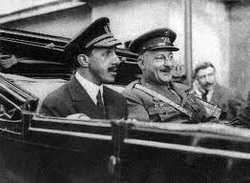 Somewhat unpleased with the murder of their Archbishop - and displeased immensely with the newly found strength of the working classes to fight back, the state begins to organise itself in the shape of the curiously moustached King - Alfonso XIII who pacts with the military and installs Primo de Rivera as military dictator with his blessing. Rivera’s aim is to halt the rise in militarism of the working people by increasing the militarism of the state. Simple enough. The CNT is forced underground and Anarchist newspapers are banned. (Read more about Alfonso and his relationship with the humble tapa in "Inside The Tortilla")
Somewhat unpleased with the murder of their Archbishop - and displeased immensely with the newly found strength of the working classes to fight back, the state begins to organise itself in the shape of the curiously moustached King - Alfonso XIII who pacts with the military and installs Primo de Rivera as military dictator with his blessing. Rivera’s aim is to halt the rise in militarism of the working people by increasing the militarism of the state. Simple enough. The CNT is forced underground and Anarchist newspapers are banned. (Read more about Alfonso and his relationship with the humble tapa in "Inside The Tortilla")
Latin America
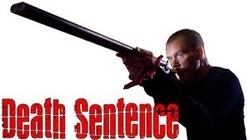 Durruti is eventually exiled once more. This time he moves to Latin America and continues his series of campaigns and bank robberies by joining the anarchist movements in Cuba, Mexico and Argentina.
Durruti is eventually exiled once more. This time he moves to Latin America and continues his series of campaigns and bank robberies by joining the anarchist movements in Cuba, Mexico and Argentina.
Adhering to the Anarchist ideology - no-one is allowed a professional wage - all monies collected are used to fund the activities of the anarchist groups, including the building of libraries and schools. These examples of social and political direct action are far too threatening for the different Latin governments and so a price is put on Durrutis head, a price that increases from one country to the next. By the time of his return - this time to Paris in 1926 - he has a death sentence hanging over his head in countries across the world.
To Kill a Mocking King
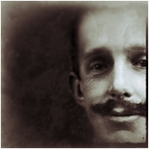 Why stop here? Says Durruti. In Paris, Alfonso XIII is visiting the french monarch in order to show off his new moustache. Durruti plans the assassination of the moustache and whilst at it, the rest of his useless body. But before he can carry out the deed, someone informs on Durruti and he is arrested and imprisoned.
Why stop here? Says Durruti. In Paris, Alfonso XIII is visiting the french monarch in order to show off his new moustache. Durruti plans the assassination of the moustache and whilst at it, the rest of his useless body. But before he can carry out the deed, someone informs on Durruti and he is arrested and imprisoned.
Not one to bow down before any bourgeois states definition of justice, Durruti flees and spends his time organising in Germany, France, Belgium and even North Africa.
Durruti the Man
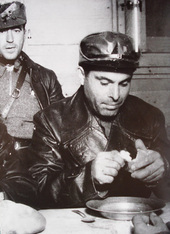 All this constitutes the life of the anarchist leader before the outbreak of the Spanish civil war. Durruti has established himself as the Malcolm McClaren of the emerging anarcho-Punk movement, with his recognisable trademark jacket, the one pistol at his side, and the characteristic hat on his head.
All this constitutes the life of the anarchist leader before the outbreak of the Spanish civil war. Durruti has established himself as the Malcolm McClaren of the emerging anarcho-Punk movement, with his recognisable trademark jacket, the one pistol at his side, and the characteristic hat on his head.
Physically, he is described as tall, solidly built, curly black hair with penetrating eyes and a disarming smile. Sociable, amiable and dab-hand at networking, Durruti's reputation is also based on his simple lifestyle and simple needs. At home he always lived poorly. His house was only ever a basic dwelling where he would often spend his time engrossed in doing the housework or cooking - much to the surprise of his compañeros. This was a man who wouldn’t leave his libertarian ideals in the meeting rooms, on the streets or in the trenches, but would take them home to breathe in and absorb and to apply to all of life in the new world opening before him.
Civil War
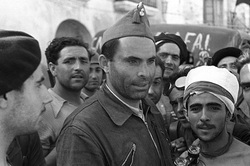 As the civil war broke out and the revolution in Catalunya spread, Durruti’s influence and prestige grows proportionately.
As the civil war broke out and the revolution in Catalunya spread, Durruti’s influence and prestige grows proportionately.
In an interview that appeared in the Toronto Herald, the reporter Van passen asks Durruti what should happen if the war continues and the workers are left with nothing but a pile of ruins. Durruti fixes his disarming eye on the reporter, pushes back his hat and says:
“Yes this war may leave us with nothing more than ruins. We have always lived in ruins. We the workers are the only producers of wealth. We make the machines in the factories, we extract the coal from the ground, it is we that construct the cities… but we will rebuild them and build them better. We know we are going to inherit a world in ruins, but we carry in out hearts another world that is being born."
A Call to Arms
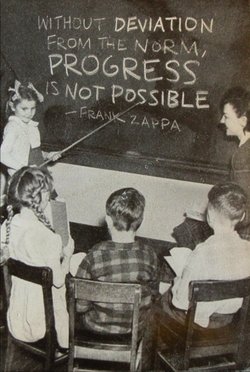 For the anarchists, the military uprising that leads to the civil war is not about challenging the reformist policies of the democratic republic, but rather an final attempt by the privileged classes to halt the spreading anarchist revolution. Durruti and the CNT decide to extend the work of the collectivisation process, moving the revolution to the smaller towns, setting up schools, libraries and to begin to organise the anarchist militia groups to fight against the nationalist uprising.
For the anarchists, the military uprising that leads to the civil war is not about challenging the reformist policies of the democratic republic, but rather an final attempt by the privileged classes to halt the spreading anarchist revolution. Durruti and the CNT decide to extend the work of the collectivisation process, moving the revolution to the smaller towns, setting up schools, libraries and to begin to organise the anarchist militia groups to fight against the nationalist uprising.
Once Barcelona is won for the CNT, his personal assembly: The Durruti Column are directed to free the city of Zarragosa, but without adequate arms their attempts to take the city are thwarted. Their weapons are too few and too antiquated. The central government looks on worried. It does not want to see the anarchists well-armed, despite their battle skills and their effective resistance to the military uprising in Catalunya. Durruti begins negotiations to buy new arms discreetly from overseas suppliers with money from the central bank, but the Republican Govt withdraws from the deal.
Durruti feels frustrated and betrayed and now believes the government is more worried about halting the social revolution than fighting Franco. Now he is convinced of the growing influence of the communists on government policy and their opposition to the anarchists ideals.
Drawing on his past, Durruti calls together a few of his most Trusted Compañeros and tells them that he has a sneaky plan to win the war. He draws them closer, checks over his shoulder to see if anyone else is listening, pulls down the peak of his hat and whispers into their eager faces: “Trusted Compañeros, we are going to steal the gold reserves from the Banco De España in Madrid!”
SPANISH GOLD
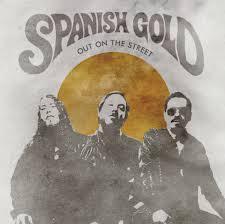 The Spanish reserve is valued at 700m dollars and is guarded 30m below ground. Durruti tells his compañeros that with the aid of the CNT rail workers, a train will carry a 1000 of his men from Barcelona to Madrid. There, they will join up with other members of his column and enter the bank. Each Militia member is to enquire about the conditions and interest rates on savings accounts, ask for a mortgage or a private loan, ask about hedge fund options for political bodies - anything to keep the staff busy whilst the rest of the team steal the gold.
The Spanish reserve is valued at 700m dollars and is guarded 30m below ground. Durruti tells his compañeros that with the aid of the CNT rail workers, a train will carry a 1000 of his men from Barcelona to Madrid. There, they will join up with other members of his column and enter the bank. Each Militia member is to enquire about the conditions and interest rates on savings accounts, ask for a mortgage or a private loan, ask about hedge fund options for political bodies - anything to keep the staff busy whilst the rest of the team steal the gold.
The Trusted Compañeros scratch their heads and look confused. "Alright, alright" says Durruti. " Forget I said anything about Hedge-funds. You can force your way into the bank and use pistols if you like."
The Trusted Compañeros give a collective sigh of relief. "Once you have the gold", continues Durruti, "it will be brought to Barcelona where it will be traded for the arms that I have already arranged to buy."
Amongst the eager faces of the Trusted Crew - staring into the penetrating eyes of their leader - was one face that continued to show a worried frown. His name was Santillán and he had doubts about the whole plan. "But Boss...How are we to get into the vaults? How are we to get the money out without raising suspicions? How will we get the gold back on the train without other passengers spotting the millions of gold bars in the overhead luggage rack?"
But Santillán didn't have the courage to ask these questions in public. So he kept them to himself, nodding in agreement with the rest of the group, slapping Durruti on the back and applauding him for his ingenious plan. But Santillán immediately stitches on our charismatic leader and informs the national committee of the CNT.
Upon hearing Santillán's comments, the CNT committee didn’t see a problem with the transport of the gold in the luggage racks, but they did fear Durruti’s plans could trigger yet another war between Catalunya and the rest of the country.
Durruti is forced to withdraw.
Perhaps just as well for a lot of anarchist funds could have been wasted on the train tickets, or opening unnecessary Hedge-fund accounts as unknown to either Durruti, the CNT committee, the Nationalists or the rest of the country - the Republican government had already given the go-ahead for the communists to begin to move the gold to Moscow.
Next week - in the final episode of the Silenced Revolution
Why did Durruti and his column - that had a reputation of never losing a battle - head off to Madrid and abandon their revolution in cataluya?Who was responsible for the assassination of Durruti on the outskirts of Madrid?Why did the US embassy during the funeral entourage lower their flag in respect to the man who today would have been on the top of their global terrorist list?And what is the Durruti legacy today, almost 80 years later for the alternative left in Spain.
Find out in the final episode and in this this post EU election special next week. Sign HERE to be notified when the post is out and of future releases.
Durruti's Early Years and the Pistoleros
Ché, Lenin, Spartacus, Guy Fawkes, Joan of Arc...the list of the famous revolutionaries in history is well known, but for me has always lacked another name: Durruti.
Born in Leon in 1896, Durruti was the son of Union man. As a young man, he becomes a charismatic union leader, committed to defend his fellow workers in a period of state approved violence by employers.
Durruti and his Justiceros
 In Spain of the 1920’s, the employers of cities like Barcelona were using armed groups to hunt down and eliminate “agitators” - a euphemism for CNT workers and anarchist leaders. This practice became known as pistolerismo and alongside the ley de fugas - where agitators were shot 'trying to escape' from political sentences in jail - almost every well-known union or anarchist leaders between 1919 and 1922 was murdered. Behind this political repression of workers in Spain, were figures such as the Cardinal Soldevila of Zaragossa who had financed employer backed unions with money raised from his gambling empires. After a period of time in exile, Durruti returns to Spain and helps form a new group to combat this wave of violence. "Give Peace a Chance" will be a slogan for another era. Now, argues Durruti, we need bullets.
In Spain of the 1920’s, the employers of cities like Barcelona were using armed groups to hunt down and eliminate “agitators” - a euphemism for CNT workers and anarchist leaders. This practice became known as pistolerismo and alongside the ley de fugas - where agitators were shot 'trying to escape' from political sentences in jail - almost every well-known union or anarchist leaders between 1919 and 1922 was murdered. Behind this political repression of workers in Spain, were figures such as the Cardinal Soldevila of Zaragossa who had financed employer backed unions with money raised from his gambling empires. After a period of time in exile, Durruti returns to Spain and helps form a new group to combat this wave of violence. "Give Peace a Chance" will be a slogan for another era. Now, argues Durruti, we need bullets.Just as all hope seems lost for the struggling workers of Catalunya - riding in at sun-set from San Sebatian comes the the Justiceros - led by our hero Durruti. This group of radical anarchists seeks out the private band of Pistoleros and kills them off or chases them out of town. "Yeehah!"
But the hand that fed the Pistoleros was still alive and functioning so Durruti takes the next logical step in the Justiceros manual: he decides to assassinate the archbishop. (Read more below)
Primo de rivera and the the King
 Somewhat unpleased with the murder of their Archbishop - and displeased immensely with the newly found strength of the working classes to fight back, the state begins to organise itself in the shape of the curiously moustached King - Alfonso XIII who pacts with the military and installs Primo de Rivera as military dictator with his blessing. Rivera’s aim is to halt the rise in militarism of the working people by increasing the militarism of the state. Simple enough. The CNT is forced underground and Anarchist newspapers are banned. (Read more about Alfonso and his relationship with the humble tapa in "Inside The Tortilla")
Somewhat unpleased with the murder of their Archbishop - and displeased immensely with the newly found strength of the working classes to fight back, the state begins to organise itself in the shape of the curiously moustached King - Alfonso XIII who pacts with the military and installs Primo de Rivera as military dictator with his blessing. Rivera’s aim is to halt the rise in militarism of the working people by increasing the militarism of the state. Simple enough. The CNT is forced underground and Anarchist newspapers are banned. (Read more about Alfonso and his relationship with the humble tapa in "Inside The Tortilla") Latin America
 Durruti is eventually exiled once more. This time he moves to Latin America and continues his series of campaigns and bank robberies by joining the anarchist movements in Cuba, Mexico and Argentina.
Durruti is eventually exiled once more. This time he moves to Latin America and continues his series of campaigns and bank robberies by joining the anarchist movements in Cuba, Mexico and Argentina. Adhering to the Anarchist ideology - no-one is allowed a professional wage - all monies collected are used to fund the activities of the anarchist groups, including the building of libraries and schools. These examples of social and political direct action are far too threatening for the different Latin governments and so a price is put on Durrutis head, a price that increases from one country to the next. By the time of his return - this time to Paris in 1926 - he has a death sentence hanging over his head in countries across the world.
To Kill a Mocking King
 Why stop here? Says Durruti. In Paris, Alfonso XIII is visiting the french monarch in order to show off his new moustache. Durruti plans the assassination of the moustache and whilst at it, the rest of his useless body. But before he can carry out the deed, someone informs on Durruti and he is arrested and imprisoned.
Why stop here? Says Durruti. In Paris, Alfonso XIII is visiting the french monarch in order to show off his new moustache. Durruti plans the assassination of the moustache and whilst at it, the rest of his useless body. But before he can carry out the deed, someone informs on Durruti and he is arrested and imprisoned.Not one to bow down before any bourgeois states definition of justice, Durruti flees and spends his time organising in Germany, France, Belgium and even North Africa.
Durruti the Man
 All this constitutes the life of the anarchist leader before the outbreak of the Spanish civil war. Durruti has established himself as the Malcolm McClaren of the emerging anarcho-Punk movement, with his recognisable trademark jacket, the one pistol at his side, and the characteristic hat on his head.
All this constitutes the life of the anarchist leader before the outbreak of the Spanish civil war. Durruti has established himself as the Malcolm McClaren of the emerging anarcho-Punk movement, with his recognisable trademark jacket, the one pistol at his side, and the characteristic hat on his head. Physically, he is described as tall, solidly built, curly black hair with penetrating eyes and a disarming smile. Sociable, amiable and dab-hand at networking, Durruti's reputation is also based on his simple lifestyle and simple needs. At home he always lived poorly. His house was only ever a basic dwelling where he would often spend his time engrossed in doing the housework or cooking - much to the surprise of his compañeros. This was a man who wouldn’t leave his libertarian ideals in the meeting rooms, on the streets or in the trenches, but would take them home to breathe in and absorb and to apply to all of life in the new world opening before him.
Civil War
 As the civil war broke out and the revolution in Catalunya spread, Durruti’s influence and prestige grows proportionately.
As the civil war broke out and the revolution in Catalunya spread, Durruti’s influence and prestige grows proportionately. In an interview that appeared in the Toronto Herald, the reporter Van passen asks Durruti what should happen if the war continues and the workers are left with nothing but a pile of ruins. Durruti fixes his disarming eye on the reporter, pushes back his hat and says:
“Yes this war may leave us with nothing more than ruins. We have always lived in ruins. We the workers are the only producers of wealth. We make the machines in the factories, we extract the coal from the ground, it is we that construct the cities… but we will rebuild them and build them better. We know we are going to inherit a world in ruins, but we carry in out hearts another world that is being born."
A Call to Arms
 For the anarchists, the military uprising that leads to the civil war is not about challenging the reformist policies of the democratic republic, but rather an final attempt by the privileged classes to halt the spreading anarchist revolution. Durruti and the CNT decide to extend the work of the collectivisation process, moving the revolution to the smaller towns, setting up schools, libraries and to begin to organise the anarchist militia groups to fight against the nationalist uprising.
For the anarchists, the military uprising that leads to the civil war is not about challenging the reformist policies of the democratic republic, but rather an final attempt by the privileged classes to halt the spreading anarchist revolution. Durruti and the CNT decide to extend the work of the collectivisation process, moving the revolution to the smaller towns, setting up schools, libraries and to begin to organise the anarchist militia groups to fight against the nationalist uprising.Once Barcelona is won for the CNT, his personal assembly: The Durruti Column are directed to free the city of Zarragosa, but without adequate arms their attempts to take the city are thwarted. Their weapons are too few and too antiquated. The central government looks on worried. It does not want to see the anarchists well-armed, despite their battle skills and their effective resistance to the military uprising in Catalunya. Durruti begins negotiations to buy new arms discreetly from overseas suppliers with money from the central bank, but the Republican Govt withdraws from the deal.
Durruti feels frustrated and betrayed and now believes the government is more worried about halting the social revolution than fighting Franco. Now he is convinced of the growing influence of the communists on government policy and their opposition to the anarchists ideals.
Drawing on his past, Durruti calls together a few of his most Trusted Compañeros and tells them that he has a sneaky plan to win the war. He draws them closer, checks over his shoulder to see if anyone else is listening, pulls down the peak of his hat and whispers into their eager faces: “Trusted Compañeros, we are going to steal the gold reserves from the Banco De España in Madrid!”
SPANISH GOLD
 The Spanish reserve is valued at 700m dollars and is guarded 30m below ground. Durruti tells his compañeros that with the aid of the CNT rail workers, a train will carry a 1000 of his men from Barcelona to Madrid. There, they will join up with other members of his column and enter the bank. Each Militia member is to enquire about the conditions and interest rates on savings accounts, ask for a mortgage or a private loan, ask about hedge fund options for political bodies - anything to keep the staff busy whilst the rest of the team steal the gold.
The Spanish reserve is valued at 700m dollars and is guarded 30m below ground. Durruti tells his compañeros that with the aid of the CNT rail workers, a train will carry a 1000 of his men from Barcelona to Madrid. There, they will join up with other members of his column and enter the bank. Each Militia member is to enquire about the conditions and interest rates on savings accounts, ask for a mortgage or a private loan, ask about hedge fund options for political bodies - anything to keep the staff busy whilst the rest of the team steal the gold. The Trusted Compañeros scratch their heads and look confused. "Alright, alright" says Durruti. " Forget I said anything about Hedge-funds. You can force your way into the bank and use pistols if you like."
The Trusted Compañeros give a collective sigh of relief. "Once you have the gold", continues Durruti, "it will be brought to Barcelona where it will be traded for the arms that I have already arranged to buy."
Amongst the eager faces of the Trusted Crew - staring into the penetrating eyes of their leader - was one face that continued to show a worried frown. His name was Santillán and he had doubts about the whole plan. "But Boss...How are we to get into the vaults? How are we to get the money out without raising suspicions? How will we get the gold back on the train without other passengers spotting the millions of gold bars in the overhead luggage rack?"
But Santillán didn't have the courage to ask these questions in public. So he kept them to himself, nodding in agreement with the rest of the group, slapping Durruti on the back and applauding him for his ingenious plan. But Santillán immediately stitches on our charismatic leader and informs the national committee of the CNT.
Upon hearing Santillán's comments, the CNT committee didn’t see a problem with the transport of the gold in the luggage racks, but they did fear Durruti’s plans could trigger yet another war between Catalunya and the rest of the country.
Durruti is forced to withdraw.
Perhaps just as well for a lot of anarchist funds could have been wasted on the train tickets, or opening unnecessary Hedge-fund accounts as unknown to either Durruti, the CNT committee, the Nationalists or the rest of the country - the Republican government had already given the go-ahead for the communists to begin to move the gold to Moscow.
Next week - in the final episode of the Silenced Revolution
Why did Durruti and his column - that had a reputation of never losing a battle - head off to Madrid and abandon their revolution in cataluya?Who was responsible for the assassination of Durruti on the outskirts of Madrid?Why did the US embassy during the funeral entourage lower their flag in respect to the man who today would have been on the top of their global terrorist list?And what is the Durruti legacy today, almost 80 years later for the alternative left in Spain.
Find out in the final episode and in this this post EU election special next week. Sign HERE to be notified when the post is out and of future releases.
Published on May 21, 2014 01:16
May 10, 2014
The Silenced Struggle within the Spanish Civil War
Most people believe the Spanish Civil War was a straightforward struggle between democracy and fascism. It wasn't. The struggle had begun years earlier when a libertarian revolutionary movement began in different parts of the country. Consolidated in Barcelona, this new society was not interested in the defence of the a republic - but it was keen to defend, develop and spread the first - and only - anarchist society in the history of the modern world. This is that story. Part One: The Backdrop
I find my relationship with Spain - yet again - on the brink of change. My relationship seems to shift back and forth weekly - like the ferry from Portsmouth to Bilbao - as reports emerge of corruption, royal scandal and the gradual dissolving of social liberties.
Connected, disconnected. Engaged, disengaged. In child-like awe, in cynical disgust. In short I’m a confused monk once more, and I'm just a little afraid that nothing will change.
But What if?
 Tap Your toes to the Anarchist Anthem from the 1930's As elections draw near once more, I fear the continuum. More of the same - save a differnce in colour or shape of beard - I fear there will be no change, when change really ought to be on the agenda. You must have noticed it too. The same lack of idealism, the same lack of vision and the same lack of leadership.
Tap Your toes to the Anarchist Anthem from the 1930's As elections draw near once more, I fear the continuum. More of the same - save a differnce in colour or shape of beard - I fear there will be no change, when change really ought to be on the agenda. You must have noticed it too. The same lack of idealism, the same lack of vision and the same lack of leadership.
But what if there was no leadership? What if we could say to those in government: "justify your position to govern us, and if we are not satisfied by your explanation, we are at liberty to throw you on to the scrap heap".
Sounds fun doesn't it, but maybe a little idealistic? Well, hold on to your horses because it is not only an attractive theory, it was a working theory in Spain during the early 1930’s. This is the story of a Revolution from below.
A Revolution from Below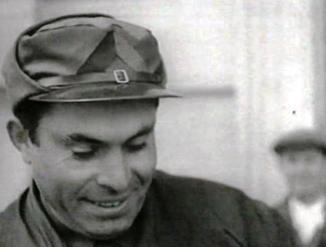 In this series of articles on the Other Civil War in Spain - a subject I have already touched upon with Orwell and Ethel MacDonald - we are going to take a look at a figure that shook the establishment to the ground. A bank robber, an assassin, a soldier, an inspiration to millions of people across the world: Put your hands together please for...
In this series of articles on the Other Civil War in Spain - a subject I have already touched upon with Orwell and Ethel MacDonald - we are going to take a look at a figure that shook the establishment to the ground. A bank robber, an assassin, a soldier, an inspiration to millions of people across the world: Put your hands together please for...
Buenaventura
Durruti
Composed of three special investigations, the Gazpachomonk offers up a Mediterranean diet of text, classic videos and films as well as audio files - (See "To the Barricades" above). So put on the kettle, tilt back your Durruti hat, put your feet up and explore The Silenced Struggle.
Read the rest of The Silenced Revolution here...
Part 1: Backdrop to a Silenced Struggle I often think of the great heroes of my youth - those that earned an Athena poster on the wall - Che Guevara - Georgie Best - Bruce Lee - Captain Pugwash - and I’d often say to myself - Is there someone missing? Recently, I learnt who that person was - a man called Buenaventura Durruti
To understand this man we have to first take a look at the background that produced such a figure. A background whereby freedoms were hard fought for and often short lived. Freedoms that were restrained by the military and the church as well as by the state. Freedoms that were denied to the majority, but revelled in by the minority.
 At the beginning of the last century Spain was still a feudal state. However, with the emerging industrial areas in Barcelona and Bilbao, a new workforce was growing rapidly which was in need of a new union of workers to consolidate the numerous disparate representative groups. So in 1910 the Confederacion Nacional Trabajadores or CNT was created, based on the fundamental principles of Anarchism.
At the beginning of the last century Spain was still a feudal state. However, with the emerging industrial areas in Barcelona and Bilbao, a new workforce was growing rapidly which was in need of a new union of workers to consolidate the numerous disparate representative groups. So in 1910 the Confederacion Nacional Trabajadores or CNT was created, based on the fundamental principles of Anarchism.
Anarchy in Iberia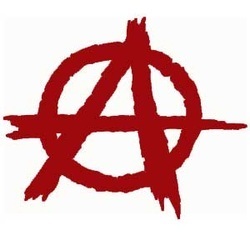 Yes thats right: Anarchism. But lets get one thing straight before we start - Anarchism has nothing to do with "chaos", The Sex Pistols or Internet "hackers": This is just popular media nonsense. Anarchism is a highly organised force that is run and composed democratically from "below", as oppressed to "above". This is because when power rests with a few, then corruption inevitably occurs. Anarchists do not believe we need "rulers" in fact if we were left to ourselves, we could organise more effectively, more efficiently and more justly without overlords, royal families, CEO's and petty tyrants.
Yes thats right: Anarchism. But lets get one thing straight before we start - Anarchism has nothing to do with "chaos", The Sex Pistols or Internet "hackers": This is just popular media nonsense. Anarchism is a highly organised force that is run and composed democratically from "below", as oppressed to "above". This is because when power rests with a few, then corruption inevitably occurs. Anarchists do not believe we need "rulers" in fact if we were left to ourselves, we could organise more effectively, more efficiently and more justly without overlords, royal families, CEO's and petty tyrants.
All sounds good in theory, you may be saying to yourself, but where are the practical examples? Well, we are coming to that soon enough. Just remember that although all progressive political forces agree on oppossing the exploitation of man by man, only anarchism opposes the domination of man over man. Ok, now, lets get back to Spain...
In 1923 the CNT was outlawed by the military dictator Primo de Rivera. This was rather silly for if you remember when Frankie Goes to Hollywood was banned on Radio One back in the 1980's - the single Relax shot straight to number one and stayed there for months to the acute embarrassment of the BBC.
Well, the same thing happened here. Primo de Rivera bans the CNT only to find memberships increases and new factions get developed, such as the new Federación Anarquista Ibérica (FAI). Created on a beach in Valencia in 1927, this radical division had its own newspaper called: Tierra y Libertad (from which Ken Loach took the name for his film) and focussed on Direct Action.
The 2nd Republic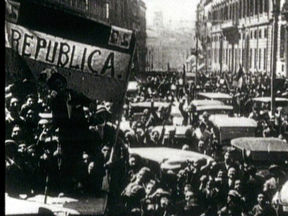 This was the first anarchist revolution the world had ever seen. At a time of vast shortages of raw materials, communication impossibilities and prohibited or reduced trade, those industries collectivized under the anarchists increased production and modernized the plants so effeciently that when the employers eventually returned after the "war", they could not believe they had a surplus of stock and an improved production line.
This was the first anarchist revolution the world had ever seen. At a time of vast shortages of raw materials, communication impossibilities and prohibited or reduced trade, those industries collectivized under the anarchists increased production and modernized the plants so effeciently that when the employers eventually returned after the "war", they could not believe they had a surplus of stock and an improved production line.
This was a revolution that didn't need police, or priests or even revolutionaries. It was a revolution that increased output in collectivised factories despite rationing, and a revolution that set out new civil rights far and beyond any other country in the world.
Such a revolution was always going to be a threat - not just to the clerical or military right, but to the moderate left, and even to the authoritarian left - as we shall see in next weeks instalment.
Join me next week for part 2 where we meet Durruti (At Last!) the inspirational leader of the movement and the man whose poster should be hanging on your bedroom wall.
And...to keep your Anarchist juices flowing, you might want to watch this few minutes....classic Chaplin dialogue.
Sign up HERE to get updates sent the day they come out.
I find my relationship with Spain - yet again - on the brink of change. My relationship seems to shift back and forth weekly - like the ferry from Portsmouth to Bilbao - as reports emerge of corruption, royal scandal and the gradual dissolving of social liberties.
Connected, disconnected. Engaged, disengaged. In child-like awe, in cynical disgust. In short I’m a confused monk once more, and I'm just a little afraid that nothing will change.
But What if?
 Tap Your toes to the Anarchist Anthem from the 1930's As elections draw near once more, I fear the continuum. More of the same - save a differnce in colour or shape of beard - I fear there will be no change, when change really ought to be on the agenda. You must have noticed it too. The same lack of idealism, the same lack of vision and the same lack of leadership.
Tap Your toes to the Anarchist Anthem from the 1930's As elections draw near once more, I fear the continuum. More of the same - save a differnce in colour or shape of beard - I fear there will be no change, when change really ought to be on the agenda. You must have noticed it too. The same lack of idealism, the same lack of vision and the same lack of leadership.But what if there was no leadership? What if we could say to those in government: "justify your position to govern us, and if we are not satisfied by your explanation, we are at liberty to throw you on to the scrap heap".
Sounds fun doesn't it, but maybe a little idealistic? Well, hold on to your horses because it is not only an attractive theory, it was a working theory in Spain during the early 1930’s. This is the story of a Revolution from below.
A Revolution from Below
 In this series of articles on the Other Civil War in Spain - a subject I have already touched upon with Orwell and Ethel MacDonald - we are going to take a look at a figure that shook the establishment to the ground. A bank robber, an assassin, a soldier, an inspiration to millions of people across the world: Put your hands together please for...
In this series of articles on the Other Civil War in Spain - a subject I have already touched upon with Orwell and Ethel MacDonald - we are going to take a look at a figure that shook the establishment to the ground. A bank robber, an assassin, a soldier, an inspiration to millions of people across the world: Put your hands together please for...Buenaventura
Durruti
Composed of three special investigations, the Gazpachomonk offers up a Mediterranean diet of text, classic videos and films as well as audio files - (See "To the Barricades" above). So put on the kettle, tilt back your Durruti hat, put your feet up and explore The Silenced Struggle.
Read the rest of The Silenced Revolution here...
Part 1: Backdrop to a Silenced Struggle I often think of the great heroes of my youth - those that earned an Athena poster on the wall - Che Guevara - Georgie Best - Bruce Lee - Captain Pugwash - and I’d often say to myself - Is there someone missing? Recently, I learnt who that person was - a man called Buenaventura Durruti
To understand this man we have to first take a look at the background that produced such a figure. A background whereby freedoms were hard fought for and often short lived. Freedoms that were restrained by the military and the church as well as by the state. Freedoms that were denied to the majority, but revelled in by the minority.
 At the beginning of the last century Spain was still a feudal state. However, with the emerging industrial areas in Barcelona and Bilbao, a new workforce was growing rapidly which was in need of a new union of workers to consolidate the numerous disparate representative groups. So in 1910 the Confederacion Nacional Trabajadores or CNT was created, based on the fundamental principles of Anarchism.
At the beginning of the last century Spain was still a feudal state. However, with the emerging industrial areas in Barcelona and Bilbao, a new workforce was growing rapidly which was in need of a new union of workers to consolidate the numerous disparate representative groups. So in 1910 the Confederacion Nacional Trabajadores or CNT was created, based on the fundamental principles of Anarchism.Anarchy in Iberia
 Yes thats right: Anarchism. But lets get one thing straight before we start - Anarchism has nothing to do with "chaos", The Sex Pistols or Internet "hackers": This is just popular media nonsense. Anarchism is a highly organised force that is run and composed democratically from "below", as oppressed to "above". This is because when power rests with a few, then corruption inevitably occurs. Anarchists do not believe we need "rulers" in fact if we were left to ourselves, we could organise more effectively, more efficiently and more justly without overlords, royal families, CEO's and petty tyrants.
Yes thats right: Anarchism. But lets get one thing straight before we start - Anarchism has nothing to do with "chaos", The Sex Pistols or Internet "hackers": This is just popular media nonsense. Anarchism is a highly organised force that is run and composed democratically from "below", as oppressed to "above". This is because when power rests with a few, then corruption inevitably occurs. Anarchists do not believe we need "rulers" in fact if we were left to ourselves, we could organise more effectively, more efficiently and more justly without overlords, royal families, CEO's and petty tyrants.All sounds good in theory, you may be saying to yourself, but where are the practical examples? Well, we are coming to that soon enough. Just remember that although all progressive political forces agree on oppossing the exploitation of man by man, only anarchism opposes the domination of man over man. Ok, now, lets get back to Spain...
In 1923 the CNT was outlawed by the military dictator Primo de Rivera. This was rather silly for if you remember when Frankie Goes to Hollywood was banned on Radio One back in the 1980's - the single Relax shot straight to number one and stayed there for months to the acute embarrassment of the BBC.
Well, the same thing happened here. Primo de Rivera bans the CNT only to find memberships increases and new factions get developed, such as the new Federación Anarquista Ibérica (FAI). Created on a beach in Valencia in 1927, this radical division had its own newspaper called: Tierra y Libertad (from which Ken Loach took the name for his film) and focussed on Direct Action.
The 2nd Republic
 This was the first anarchist revolution the world had ever seen. At a time of vast shortages of raw materials, communication impossibilities and prohibited or reduced trade, those industries collectivized under the anarchists increased production and modernized the plants so effeciently that when the employers eventually returned after the "war", they could not believe they had a surplus of stock and an improved production line.
This was the first anarchist revolution the world had ever seen. At a time of vast shortages of raw materials, communication impossibilities and prohibited or reduced trade, those industries collectivized under the anarchists increased production and modernized the plants so effeciently that when the employers eventually returned after the "war", they could not believe they had a surplus of stock and an improved production line.This was a revolution that didn't need police, or priests or even revolutionaries. It was a revolution that increased output in collectivised factories despite rationing, and a revolution that set out new civil rights far and beyond any other country in the world.
Such a revolution was always going to be a threat - not just to the clerical or military right, but to the moderate left, and even to the authoritarian left - as we shall see in next weeks instalment.
Join me next week for part 2 where we meet Durruti (At Last!) the inspirational leader of the movement and the man whose poster should be hanging on your bedroom wall.
And...to keep your Anarchist juices flowing, you might want to watch this few minutes....classic Chaplin dialogue.
Sign up HERE to get updates sent the day they come out.
Published on May 10, 2014 07:56
May 4, 2014
Anarchism in Spain: Ethel MacDonald
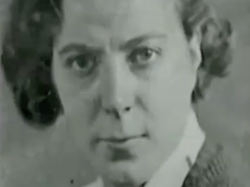 What prompted a working class girl from Scotland to come to Spain during the civil war? What compelled her to side with the anarchist movement and what drove her - like George Orwell - to keep on fighting for the truth about what the struggle was really about?
What prompted a working class girl from Scotland to come to Spain during the civil war? What compelled her to side with the anarchist movement and what drove her - like George Orwell - to keep on fighting for the truth about what the struggle was really about?In this 3 part series on Anarchism in Spain, discover what another possible world through the eyes of Orwell, Durrutti and in this post: Ethel MacDonald It is astonishing how many accounts of the Spanish Civil War even today, portray that battle as a struggle between the forces of Fascism and the forces of Democracy.
Yet for anyone who has delved into the origins of the 2nd Republic in Spain and the issues being fought for during the early 1930's there was another agenda, a parallel struggle as important as anything that was happening in the barracks or the battlefield.
This was the struggle for another way of life. Not merely the defence of the new "democratic Republic" that after 5 years had failed to counter the hardships, inequalities and injustices of the masses. This was no simple "left-right" ideological war. This was a struggle to forge something altogether new, something previously never seen - something - as Noam Chomsky has argued - that would represent an entirely new way of living in this world.
The Promise of Anarchism
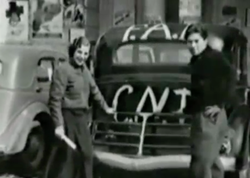 In this short series on Anarchism in Spain, I shall be exploring this radical and immensely popular movement through the eyes of a few individuals that were driven not simply to defend the few hard-won rights in a fledging democracy, but to go further and implement a new society altogether. These individuals were not satisfied with the reformism of democracy, nor the authoritarianism of the Communist dreams, but individuals that articulated a new future that would shake the political forces across the globe and construct an uneasy alliance between left and right to undermine it, to capture and kill its leaders and finally to destroy its ideology, turning it into the sad parody it has become today.
In this short series on Anarchism in Spain, I shall be exploring this radical and immensely popular movement through the eyes of a few individuals that were driven not simply to defend the few hard-won rights in a fledging democracy, but to go further and implement a new society altogether. These individuals were not satisfied with the reformism of democracy, nor the authoritarianism of the Communist dreams, but individuals that articulated a new future that would shake the political forces across the globe and construct an uneasy alliance between left and right to undermine it, to capture and kill its leaders and finally to destroy its ideology, turning it into the sad parody it has become today. Read more about Ethel and watch the biographical film on YoutUbe below.... Ethel MacDonald: The Scottish Anarchist in Spain
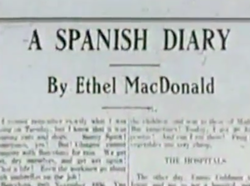 In 1936, with the civil war about to break out, one Scottish woman from Motherwell finds a job in a workers rights centre in Glasgow, helping distribute the radical newspaper: Regeneration. As the struggle in Spain intensifies, she is sent out to cover the imminent war from Barcelona.
In 1936, with the civil war about to break out, one Scottish woman from Motherwell finds a job in a workers rights centre in Glasgow, helping distribute the radical newspaper: Regeneration. As the struggle in Spain intensifies, she is sent out to cover the imminent war from Barcelona. She arrives in the city 2 months before Orwell will arrive, and like him, she sees not a country in preparation for war, but a people who have at last shaken off the shackles and constraints of the new republic and were instead creating a completely new order that effortlessly takes control of industry, society, government, commerce, health and education.
This is not the anarchism ridiculed in the popular press, but the self-educated organisations that sprung up to run a city and a country by the very people themselves, without the hierarchies and divisions that had plagued the radical movements of other times.
Ethel found in the city a deeply rooted sense of liberation. In modes of dress, in the dignity of work, in the emphasis on schooling and social organisation - all was changing before her eyes. Even in language there were changes: the word "mujer" was being changed for "compañera"
"Peasants formed communes on land confiscated from the old ruling elite. Three million men, women and children lived and worked in them. Anarchists had taken over the factories. Police were replaced with civilian self-defence forces. Three quarters of the economy was under anarchist control. Hotels, shops, barber shops and restaurants were collectivised and managed by their workers – often increasing productivity and profit. The maxim ‘from each according to his ability, to each according to his need’ was put into practice. Women won the right to divorce and abortion, and the idea of ‘free love’ became popular in the sense [of] the right to enter into a relationship without the permission of State or Church."The Growing Influence of Russia
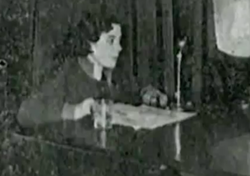 As her reports on the Catalan Revolution are sent home, Ethel MacDonald is offered a job on a radio station to send out reports to the rest of the world in English, and to speak directly to the International troops arriving to help the Spanish cause.
As her reports on the Catalan Revolution are sent home, Ethel MacDonald is offered a job on a radio station to send out reports to the rest of the world in English, and to speak directly to the International troops arriving to help the Spanish cause.Ethel does so, but surprisingly for those who offer her the work, she does so from the perspective of an anarchist and her reports are inspiring and motivating to her "compañeros/as on the front. However, as she reports on the revolutions succeses and failures, the civil war slowly shifts ground and the relatively small Communist Party becmes a leading power as Spain receives no support other than that from Russia.
But Russia has its own agenda, it needs to placate Britain and France to get their support against Hitlers threats to the USSR. Stalin instructs the Communist party in Spain to halt the anarchist revolution for two reasons: First because Russia fears Britain and French resistance to such a radical movement and Stalin needs their support. Secondly, Stalin fears the ideological influence of Anarchism - with its immense influence and popularity and its close association with Trotskiest groups such as the POUM - in which Orwell is fighting - the anarchists represent an alternative and immediate path to social revolution, one that seems not to require the authoritarianism of Russia's own state party.
As Orwell describes in Homage to Catalonia, the Communists grew in influence each day and with the promise of weapons, they quickly became the persuasive force behind the Spanish Government's decisions. (Read more about Orwell and Spain here)
Arrested and Imprisoned As the Communists begin to "clean-up" the anarchist revolution in Catalonia, Ethel MacDonald is placed under arrest and is imprisoned by the very people she came to help. She is finally released and leaves Spain via a British ship ported at Barcelona. But outside Spain the anarchist journalist continues to travel and publicly speak to raise awareness of the Spanish revolution so recently betrayed and to raise consciousness, help and funds for the cause.
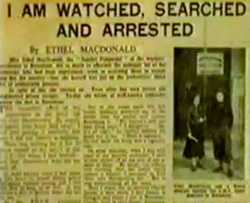 Sadly, in 1958, she was diagnosed with MS and loses the ability to speak. Ethel MacDonald dies in 1960.
Sadly, in 1958, she was diagnosed with MS and loses the ability to speak. Ethel MacDonald dies in 1960.You can watch the biographical series on her extraordinary life on Youtube. Below is episode 1.
Next on Anarchism in Spain: The charismatic Anarchist leader Durruti and his story to spark the only anarchist revolution in the history of the world. His radical plans to steal the Republic's gold reserves in Madrid in order to fund arms for the people, and his controversial death in the defence of the city.
For more on Spanish History and the hopes and fears of other times, see Bethune the ambulance driver, Laurie Lee, and more on the Second Republic in the book: Inside The Tortilla. You can also catch the audioboo version of this post here. listen to ‘Anarchism in Spain: Ethel MacDonald’ on Audioboo Ethel MacDonald. Part 1
Published on May 04, 2014 03:03
April 22, 2014
April 25th is George Orwell Day
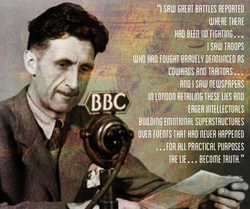 This week is celebrates George Orwell Day and in these times of Digital insecurity and Edward Snowdonion revelations about government espionage the words of this great writer echo with a greater ferocity each year.
This week is celebrates George Orwell Day and in these times of Digital insecurity and Edward Snowdonion revelations about government espionage the words of this great writer echo with a greater ferocity each year. It is difficult to conclude that we have learnt something, if anything from the prophecies of 1984. Yet there are those that have asked "Does Orwell Still Matter" and continue asking whilst we collectively sink further into a world of digital gratification and material distraction.
Remembered for his political assault on the complacency of the left and the dangers of authoritarianism, he is less remembered for his critical support for the anarchist movement in the civil war, his fighting for the POUM and the workers union, the CNT. It is in these fields that, for me at least, Orwell still matters. And, lest we forget, what happened in Barcelona in 1936 was the only successful anarchist revolution in history of the world.
So yes, Orwell still matters. So much so that if you haven't read it yet, Homage to Cataluña (get a free copy below) is a great eye-opener to a very Hispanic revolution. (More on anarchism in Spain coming soon).
You can read the orginal post on Orwell and Spain, you can listen to the podcast on George Orwell or download a free copy of Homage to Cataluña - all from here. Follow my blog with Bloglovin
Published on April 22, 2014 00:12
April 13, 2014
SEMANA SANTA: AN AGNOSTIC APPROACH
Here we come
Walking down the street
We Get the Funniest Looks From
Everyone we meet Holy Week is Upon Us Yes, its that time of the year again when the streets are filled with incense and pointy hats whilst pavements are covered in dripping wax and the weary feet of the solemn ones.
Its that time of year when you must dust down your Roman Centurion Uniform or your lace Mantel, dig out your shepherds costume, brass trombone or supply of thongy sandals.
Its time to dress up, to shine once more and get out and parade, for despite the economy, the corruption and the global grey clouds hanging about, some things are simply beyond the scope of out daily preoccupations. 70 pages of Gorgeous photos and Gazpacho Style Words in this free ebook available this week only from here. This Week Only: The Latest Free eBook from the mOnk. You can read the history of Semana Santa anywhere on the net, but how does it feel to be there?
You can read the history of Semana Santa anywhere on the net, but how does it feel to be there?
How does it feel to be down there? Amongst the devout and the not-so devout?
How does it feel to be amongst the SILENT ONES in the blackness of the madrugada with just the beat of the drums to light your way?
How does it feel to be assaulted by the Incensarios, subjected to song and dance and the wobble of a Mr. Whippy hat?
Semana Santa: An Agnostic Approach is the latest Photo ebook by the GazpachomOnk. Its available in both PDF and ePub formats and this week goes on sale. Normally €2.49, this week it's FREE (just share on social media)*
75 pages of glorious original photography and crafted text. The package comes in one handy zipped file containing both - PDF: Good for laptops, tablets and desktops. ePub: Best for iPad, other tablets and ebook readers.
Normally 2.49 - get it for free from HERE or click on Buy now below and choose SHARE. buy *Rather not share? Prefer to contribute? Just pay the 2.49 here and download your copy straight away.
Walking down the street
We Get the Funniest Looks From
Everyone we meet Holy Week is Upon Us Yes, its that time of the year again when the streets are filled with incense and pointy hats whilst pavements are covered in dripping wax and the weary feet of the solemn ones.
Its that time of year when you must dust down your Roman Centurion Uniform or your lace Mantel, dig out your shepherds costume, brass trombone or supply of thongy sandals.
Its time to dress up, to shine once more and get out and parade, for despite the economy, the corruption and the global grey clouds hanging about, some things are simply beyond the scope of out daily preoccupations. 70 pages of Gorgeous photos and Gazpacho Style Words in this free ebook available this week only from here. This Week Only: The Latest Free eBook from the mOnk.
 You can read the history of Semana Santa anywhere on the net, but how does it feel to be there?
You can read the history of Semana Santa anywhere on the net, but how does it feel to be there? How does it feel to be down there? Amongst the devout and the not-so devout?
How does it feel to be amongst the SILENT ONES in the blackness of the madrugada with just the beat of the drums to light your way?
How does it feel to be assaulted by the Incensarios, subjected to song and dance and the wobble of a Mr. Whippy hat?
Semana Santa: An Agnostic Approach is the latest Photo ebook by the GazpachomOnk. Its available in both PDF and ePub formats and this week goes on sale. Normally €2.49, this week it's FREE (just share on social media)*
75 pages of glorious original photography and crafted text. The package comes in one handy zipped file containing both - PDF: Good for laptops, tablets and desktops. ePub: Best for iPad, other tablets and ebook readers.
Normally 2.49 - get it for free from HERE or click on Buy now below and choose SHARE. buy *Rather not share? Prefer to contribute? Just pay the 2.49 here and download your copy straight away.
Published on April 13, 2014 06:56
April 4, 2014
Even on the Battlefield There Are Priorities: The All-Important Lunch-Hour in Spain
Picture the lunch-time scene:
It is early November 1936 and the Spanish Civil War has arrived to the outskirts of Madrid. Franco's troops are amassed outside the city eagerly awaiting the order to enter. Inside, the Republican government has fled to Valencia leaving the capital to be defended as best it could. The first International Brigade arrives that morning and one Russian artillery expert - Colonel N. Voronov - is atop a telefonica tower with his binoculars overlooking the battle-lines to advise on the placement of canons at the front line. It is nearing 2pm and the following conversation is heard.
Cease Fire Voronov: “Re-align the canon 26 degress east. Move it back 15 yards and prepare to fire.”
Spanish Companero: “Okey dokey Coronel”
Voronov: “Now, bring the other canons forward and align them 27 degrees south west.”
Spanish Companero: (Speaking on telefone) “Cease fire”.
Voronov: "What's happening?”
Spanish Companero:“It's lunch hour. But don't worry, after lunch we'll decimate the enemy!”
Voronov: "But by then the enemy will have changed position”.
Spanish Companero: “No they won't. They'll be having their lunch too.”
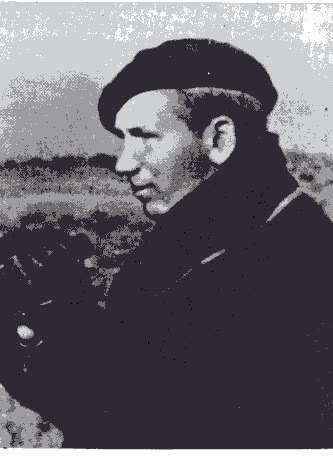 "Whats Happening?"
"Whats Happening?"  Sweat streams down the Russian’s face as he strains to hear sounds of artillary or movement of troops on the battlefield. In disbelief he scans the horizon with his binoculars, as his Spanish companion unwraps his bocadillo and takes out his flagon of Rioja.
Sweat streams down the Russian’s face as he strains to hear sounds of artillary or movement of troops on the battlefield. In disbelief he scans the horizon with his binoculars, as his Spanish companion unwraps his bocadillo and takes out his flagon of Rioja.
Spanish Companero: “Care for a bite, Colonel?”
Voronov huffs and puffs and paces anxiously for 2 hours. At 4pm precisely, his Spanish companion stands up and shouts down the phone-line: “Fire!”
Canons blast and the Rebel troops, already preparing to retaliate, begin to fire back.
Lunch is officially over.
Fact or Fiction?
The incident is true, and took place as described. What does this illustrate about the importance of culture and tradition in this country? The importance of food, timetables and rest periods in the history of Spain?
I have a few ideas, but I’m keeping mine for next weeks post, when I report on the Scottish Anarchist in Barcelona as part of the new series on "Little Known Histories From the Civil War. "
Leave your comment below or on Twitter @gazpachomonk
It is early November 1936 and the Spanish Civil War has arrived to the outskirts of Madrid. Franco's troops are amassed outside the city eagerly awaiting the order to enter. Inside, the Republican government has fled to Valencia leaving the capital to be defended as best it could. The first International Brigade arrives that morning and one Russian artillery expert - Colonel N. Voronov - is atop a telefonica tower with his binoculars overlooking the battle-lines to advise on the placement of canons at the front line. It is nearing 2pm and the following conversation is heard.
Cease Fire Voronov: “Re-align the canon 26 degress east. Move it back 15 yards and prepare to fire.”
Spanish Companero: “Okey dokey Coronel”
Voronov: “Now, bring the other canons forward and align them 27 degrees south west.”
Spanish Companero: (Speaking on telefone) “Cease fire”.
Voronov: "What's happening?”
Spanish Companero:“It's lunch hour. But don't worry, after lunch we'll decimate the enemy!”
Voronov: "But by then the enemy will have changed position”.
Spanish Companero: “No they won't. They'll be having their lunch too.”
 "Whats Happening?"
"Whats Happening?"  Sweat streams down the Russian’s face as he strains to hear sounds of artillary or movement of troops on the battlefield. In disbelief he scans the horizon with his binoculars, as his Spanish companion unwraps his bocadillo and takes out his flagon of Rioja.
Sweat streams down the Russian’s face as he strains to hear sounds of artillary or movement of troops on the battlefield. In disbelief he scans the horizon with his binoculars, as his Spanish companion unwraps his bocadillo and takes out his flagon of Rioja.Spanish Companero: “Care for a bite, Colonel?”
Voronov huffs and puffs and paces anxiously for 2 hours. At 4pm precisely, his Spanish companion stands up and shouts down the phone-line: “Fire!”
Canons blast and the Rebel troops, already preparing to retaliate, begin to fire back.
Lunch is officially over.
Fact or Fiction?
The incident is true, and took place as described. What does this illustrate about the importance of culture and tradition in this country? The importance of food, timetables and rest periods in the history of Spain?
I have a few ideas, but I’m keeping mine for next weeks post, when I report on the Scottish Anarchist in Barcelona as part of the new series on "Little Known Histories From the Civil War. "
Leave your comment below or on Twitter @gazpachomonk
Published on April 04, 2014 09:31
March 17, 2014
Truman Capote and his Train Journey from Granada in 1950
Truman Capote - travelled by train from Granada to Algeciras sometime in 1950. His short story of that journey - more a letter than a novel - illustrates the country, people and pace of life beautifully.
Having done the journey myself a few years back, I can assure you that little has changed. The journey winds through valleys, forests and olive groves at a snails pace. However, the joy of travelling at such a speed leaves you time to think, reflect and absorb the changing landscape and prepare you for the breezy delights of Algeciras.
You will also stop of at Loja on route (first stop from Granada). An excellent opportunity to see the town its all its splendid glory (see here for highlights) - give me a shout if you do, and I promise you a whirlwind tour. In the meantime, sit back and let your imagination loose on this captivating short story first published in the New Yorker from September 1950.


Having done the journey myself a few years back, I can assure you that little has changed. The journey winds through valleys, forests and olive groves at a snails pace. However, the joy of travelling at such a speed leaves you time to think, reflect and absorb the changing landscape and prepare you for the breezy delights of Algeciras.
You will also stop of at Loja on route (first stop from Granada). An excellent opportunity to see the town its all its splendid glory (see here for highlights) - give me a shout if you do, and I promise you a whirlwind tour. In the meantime, sit back and let your imagination loose on this captivating short story first published in the New Yorker from September 1950.


"Certainly the train was old. The seats sagged like the jowls of a bulldog; windowpanes were out, and strips of adhesive held together those that were left; in the corridor a prowling cat appeared to be hunting mice, and it was not unreasonable to assume that his search would be rewarded."
Published on March 17, 2014 03:26
March 13, 2014
Awaiting Change
Everything is budding, the earth is reproducing itself once more. Even the ancient plum tree in the garden that we were told to cut down 6 years ago is blossoming. The tree that is older than the houses that surround it. 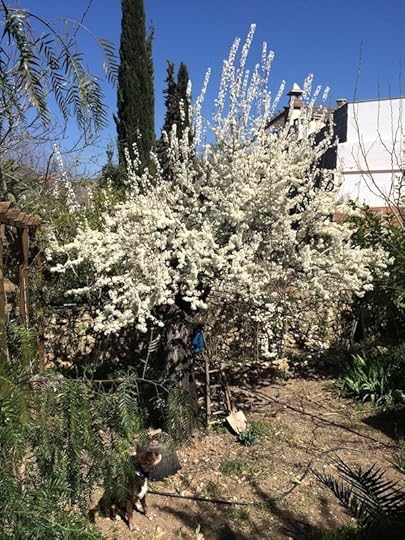

La vida no es esperar a que pase la tormenta, es aprender a bailar bajo la lluviaIs that it now? No more trips to the wood yard please. Can we put away the firelighters and the hot water bottles? And whilst we wait for those in the know to tell us of better times, what do we do? Some may say stay put, count your blessings, hold on till the sun rises again - any day now. Others - even as clouds emerge once more on the horizon -just bloom. Whatever the weather.
Published on March 13, 2014 08:40
Speaking Of Spain
History, revolution, music, videos and articles on another view of life in Spain by the Gazpachomonk
- Paul Read's profile
- 25 followers



